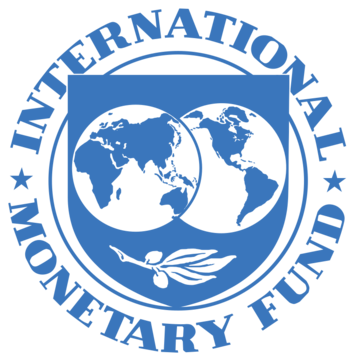By Chris Agabi
Global banking and financial markets are calm with low volatility as central banks have begun easing rates after bringing inflation back near target, the IMF said in Washington, DC Monday (April 21) at the annual Spring Meetings.
“Our assessment is that the global financial stability risk has increased significantly due to heightened economic policy uncertainty and rising market volatility. The decline in investor confidence that we have seen has triggered recent sell-offs in equity markets. The tightening of global financial conditions is putting downside pressure on economic activity,” said IMF Financial Counselor Tobias Adrian.
The assessment comes in the Global Financial Stability Report from the Fund, released during the week of the Spring Meetings of the IMF and World Bank Group.
“We take note of three forward-looking vulnerabilities. Despite recent market turmoil, some asset valuations remain elevated. If the economic outlook continues to deteriorate, these valuations could decline further, leading to tighter global financial conditions. Such tightening may adversely impact currencies, asset prices and capital flows to emerging markets,” said Adrian ahead of the release of the report.
“Currently, financial conditions have shifted from being more or less accommodative to being neutral with the potential for further tightening. In conditions of prolonged volatility, financial institutions with high leverage may experience significant stress. Non-bank financial institutions could struggle during market turbulence, potentially impacting the broader financial system. In weaker and poorly managed banks, vulnerabilities could reemerge,” Adrian warned.
“Further turbulence may also affect sovereign bond markets, particularly in regions with high government debt levels. If market functioning were to become strained in major advanced economies, and with the unwinding of leveraged trades in key sovereign bond markets, volatility could be further exacerbated. Emerging market economies already facing the highest real financing costs in the decade may need to refinance their debt and finance fiscal expenditures at increased costs. Consequently, investor concerns regarding public debt sustainability and vulnerabilities in the financial sector may intensify,” said Adrian ahead of the reports’ release.
So what should policymakers do to keep financial markets stable and resilient?
“It is crucial that we prepare for potential challenges ahead, equipping authorities to manage financial instability effectively. The policy toolkit should encompass measures that ensure market functioning, support prudential supervision and regulation of financial institutions, and provide emergency liquidity and crisis resolution tools. We recommend that financial institutions and regulators allocate resources for identifying risk and mitigating risk, employing stress testing and scenario analysis. Emerging market and developing economies should focus on enhancing their financial markets while maintaining adequate fiscal policy space and international reserves to cushion against geopolitical shocks.”
Global Financial Markets Low on Volatility As Central Banks Ease Rates – IMF
Reading Time: 2 mins read
0
Leave a Reply Cancel reply
FOLLOW US
BROWSE BY CATEGORIES
BROWSE BY TOPICS
2023 Benue Budget
Abuja-Kaduna Rail
Access Corporation
Access pension
airports concession
Aviation
Ayu
Benue Budget
Benue Community
Buhari
Business
CBN
Central Bank
Dana Air
Economy
FGPL
Herdsmen
Herdsmen attacks
insecurity
insurance
Maritime
Min of Transport
MSMEs
NAICOM
NCAA
Nigeria
Nigeria -Cameroon Border Post
Nigeria Air
NRac
Onne Port
ooh
Orrom
Ortom
PDP
PenCom
pension
Railway
Sambo Jaji
Transcorp
Transcorp Group
Transcorp Hotels Plc
UBA
Ukohol
Wike
Wildon Ideva
Economy Footprint
The EconomyFootprint is published by Ideas Tent Communications Ltd®. All Rights Reserved.















